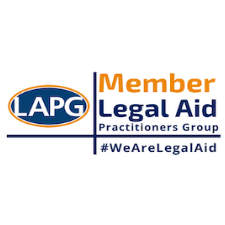The increase in crimes of this nature has led to the implementation of the Offensive Weapons Act 2019 specifically Section 46. This came into force on the 14th July 2021. This section made amendments to the Criminal Justice Act 1988 which included banning the possession of offensive weapons in a private place.
Before the implementation of this bill Section 1 Prevention of Crime Act 1953 made it an offence to carry an offensive weapon in a public place without lawful authority or reasonable excuse. An offensive weapon is defined as any article made or adapted for causing injury to a person or intended by the person having it with him for such use by him or by some other person.
What is defined as a public place?
The definition of a public place is anywhere where the public have access to. This could for example include communal areas such as those in student accommodation. This is based on the individual facts of the case.
The police found the weapon in my house – can I still be prosecuted for possession of Kitchen Knifes and other such day to day items that will be found within my house?
As of the 14th July 2021 it became a criminal offence to possess an offensive weapon in a private place such as a dwelling. Within the Act a private place is described as anything other than a public place, a school, education premises or a prison.
The schedule of what is defined as such a weapon is outlined in Section 141 of the Criminal Justice Act 1988.
- ‘a knuckleduster, that is, a band of metal or other hard material worn on one or more fingers, and designed to cause injury, and any weapon incorporating a knuckleduster;
- a swordstick, that is, a hollow walking-stick or cane containing a blade which may be used as a sword;
- the weapon sometimes known as a ‘handclaw’, being a band of metal or other hard material from which a number of sharp spikes protrude, and worn around the hand;
- the weapon sometimes known as a ‘belt buckle knife’, being a buckle which incorporates or conceals a knife;
- the weapon sometimes known as a ‘push dagger’, being a knife, the handle of which fits within a clenched fist and the blade of which protrudes from between two fingers;
- the weapon sometimes known as a ‘hollow kubotan’, being a cylindrical container containing a number of sharp spikes;
- the weapon sometimes known as a ‘footclaw’, being a bar of metal or other hard material from which a number of sharp spikes protrude, and worn strapped to the foot;
- the weapon sometimes known as a ‘shuriken’, ‘shaken’ or ‘death star’, being a hard non-flexible plate having three or more sharp radiating points and designed to be thrown;
- the weapon sometimes known as a ‘balisong’ or ‘butterfly knife’, being a blade enclosed by its handle, which is designed to split down the middle, without the operation of a spring or other mechanical means, to reveal the blade;
- the weapon sometimes known as a ‘telescopic truncheon’, being a truncheon which extends automatically by hand pressure applied to a button, spring or other device in or attached to its handle;
- the weapon sometimes known as a ‘blowpipe’ or ‘blow gun’, being a hollow tube out of which hard pellets or darts are shot by the use of breath;
- the weapon sometimes known as a ‘kusari gama’, being a length of rope, cord, wire or chain fastened at one end to a sickle;
- the weapon sometimes known as a ‘kyoketsu shoge’, being a length of rope, cord, wire or chain fastened at one end to a hooked knife;
- the weapon sometimes known as a ‘manrikigusari’ or ‘kusari’, being a length of rope, cord, wire or chain fastened at each end to a hard weight or hand grip;
- a disguised knife, that is any knife which has a concealed blade or concealed sharp point and is designed to appear to be an everyday object of a kind commonly carried on the person or in a handbag, briefcase, or other hand luggage (such as a comb, brush, writing instrument, cigarette lighter, key, lipstick or telephone);
- a stealth knife, that is a knife or spike, which has a blade, or sharp point, made from a material that is not readily detectable by apparatus used for detecting metal and which is not designed for domestic use or for use in the processing, preparation or consumption of food or as a toy;
- a straight, side-handled or friction-lock truncheon (sometimes known as a baton);
- a sword with a curved blade of 50 centimetres or over in length; and for the purposes of this sub-paragraph, the length of the blade shall be the straight line distance from the top of the handle to the tip of the blade.’
Are there any exemptions?
You cannot be prosecuted for; Crown and visiting forces, religious ceremonies, religious dress, museums and galleries and theatrical performances, production of films and production of television programmes.
Nor can you be prosecuted for the possession of antique items. These are defined as those over 100 years old.
How can we help?
At Johnson Astills we have a criminal team who regularly deal with a variety of possession offences. Our specialist advocates in the Criminal Defence Team are highly experienced in dealing with matters at both the Magistrates’ and Crown Court.
If you find yourself facing any offence it is vital to contact a solicitor as soon as possible to obtain expert legal advice. Representation at the police station is free, and legal aid may be available for your case at the Magistrates’ and Crown Court. For offences which do not qualify for legal aid, we offer fixed fees for appointments and representation.
To discuss any offences please contact our Criminal Defence Team at Johnson Astills at our Leicester Office on 0116 2554855 or our Loughborough Office on 01509 610312.








